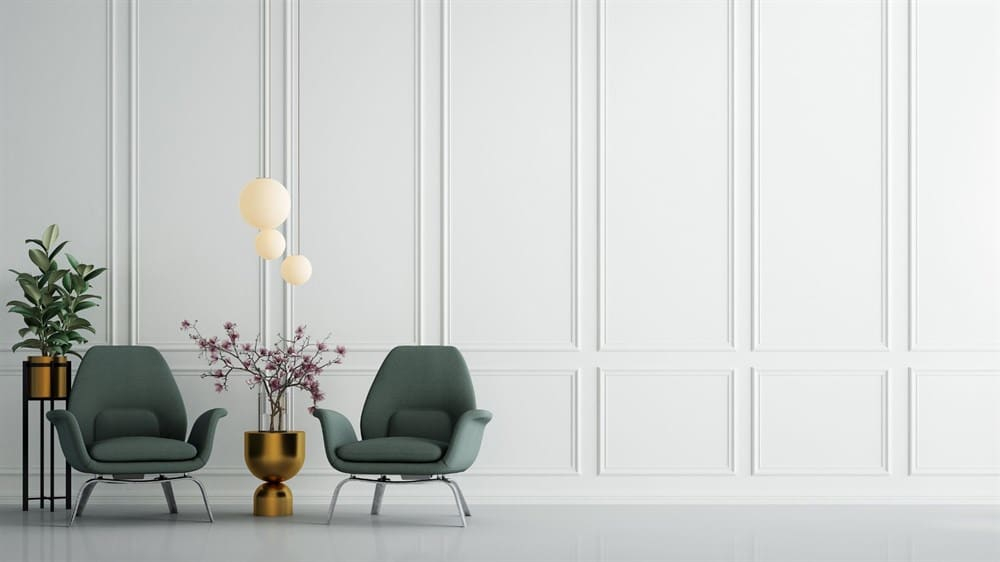Wall Panels cover the surface of a wall. They come in a variety of materials and designs. The choice of materials for wall panelling depends upon the budget, quality, and purpose of the wall panel.
Wall Panelling enhances the beauty of the wall, covers the exposed surface, hides exposed wiring or architectural flaws, etc. Sometimes, the wall panels add to the sense of aesthetic of the rooms in an apartment design.
Many a time, one can play with the materials for wall panelling to create a sense of enhanced space and space quality in a room. Thus, the material choice becomes a crucial point of discussion when selecting wall panels.
In today’s world, a variety of materials are available to choose from to form the wall panel of your choice. So instead of randomly choosing materials for wall panelling, you should look at your requirements, purpose, and budget and then decide.
Here is a detailed article that points out the major points to keep in mind when choosing the types of wall panelling materials.
Materials For Wall panelling
Wood as wall panelling
Wood is the classic material used for wall panelling. It provides a feeling of elegance and class to the space. When opting for Wood as a material for wall panelling, you can choose from a variety of woods such as Teak, Oak, Walnut, Mahogany, Sal, etc.
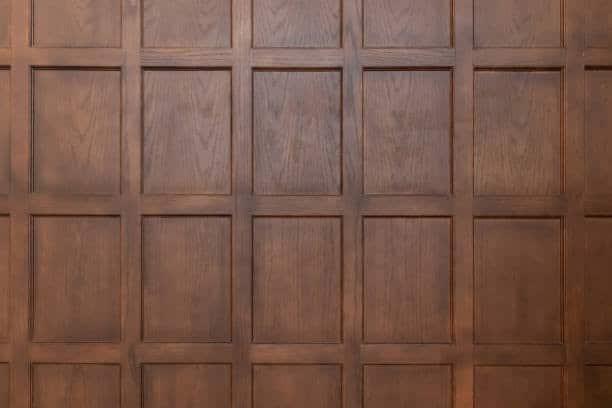
Whatever suits your budget and choice will be a good choice. When polished and sanded, their shine returns even after ages. The wooden wall panel also provides thermal insulation to the space and adds to the acoustic quality of the place.
The wood acts as an insulator and keeps your home warm in winter and cool in summer. However, this is one of the priciest materials. The wood itself is super costly and it requires constant maintenance like polishing, sanding, regular inspection, etc.
The moisture can be an enemy to the wood and cause rot to seep into the wood panel. If not detected in the beginning, it can spread throughout the panelling. Then there is the threat of termites and fires too. If you have the budget and means to install and maintain a wooden wall panel, then you must go for it.
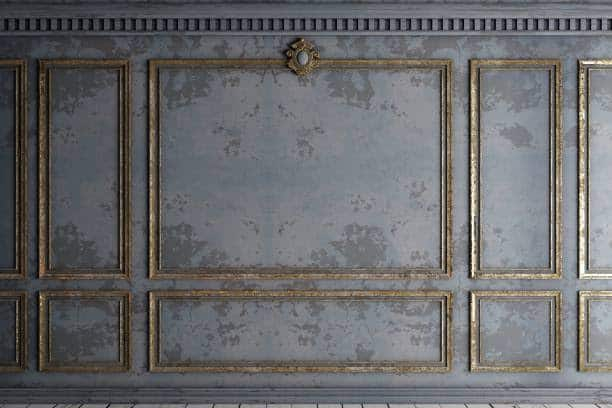
Otherwise, you can look for other materials for wall panelling. Luxury hotels and living rooms generally use wood panels as a material for wall panelling. The wall panelling gives the feel of luxury and brings out the coziness in the room.
You should avoid using it in places with moisture like the kitchen and bathrooms.
Veneer as wall panelling
Veneer is a thin layer of wood stuck onto some other durable and cheaper material. When looking at a veneer, you might get a similar feel to that of wood but it is not completely wood.
The veneer is cheaper, lighter in weight, and more durable than the wooden panel. The top surface of a veneer is usually a thin layer of wood, so the pattern and designs available in the veneer are similar to wood.
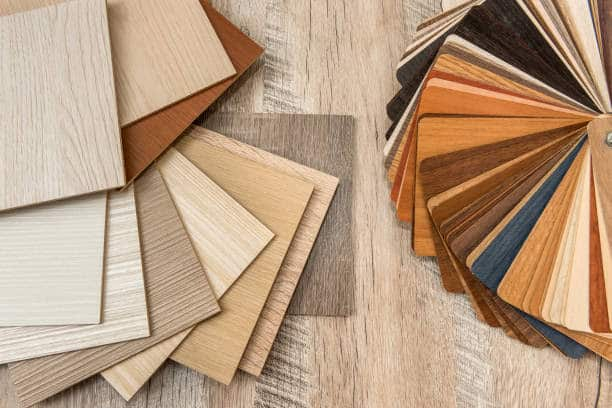
You can polish and sad the surface of the veneer to bring back its shine and luster, similar to the wood panels. The veneer wood panels do not need any grooves for installation.
Generally, vast spaces like auditoriums, halls, factories, commercial buildings, etc. use veneer wall panels to cover up large areas while being within the budget.
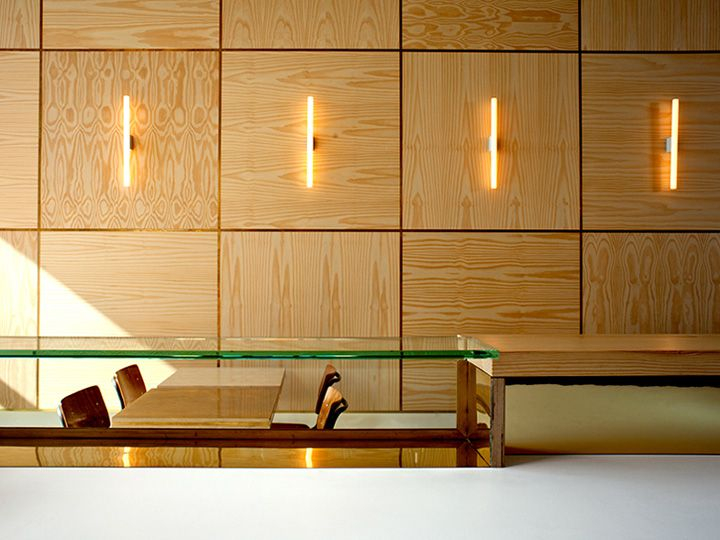
The veneer paneling is also prone to moisture and fire hazards. The maintenance is lower than the wooden panel but it requires regular inspections too.
Laminated wall panelling
Laminate is another material for wall panelling. It is a synthetic material. It is made up of multiple layers of resins and fiber boards layered up to appear like a wooden surface. They are durable, easy to maintain, and waterproof. Washrooms, bathrooms, kitchens, galleries, bedrooms etc. use laminate wall panels because of their waterproof quality.
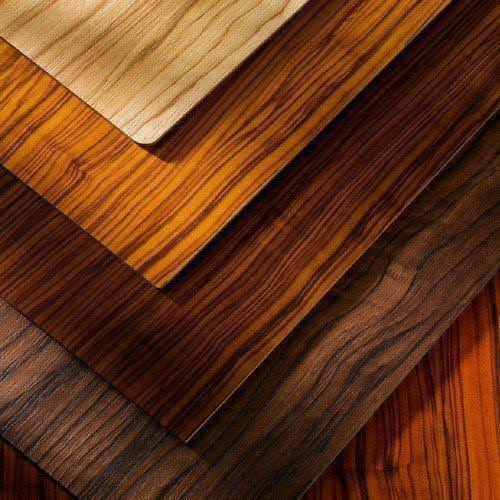
People generally combine laminate panels with the back support of plywood or something similar to add strength to the material. Laminates are synthetic materials and are easily customizable according to your aesthetic preferences.
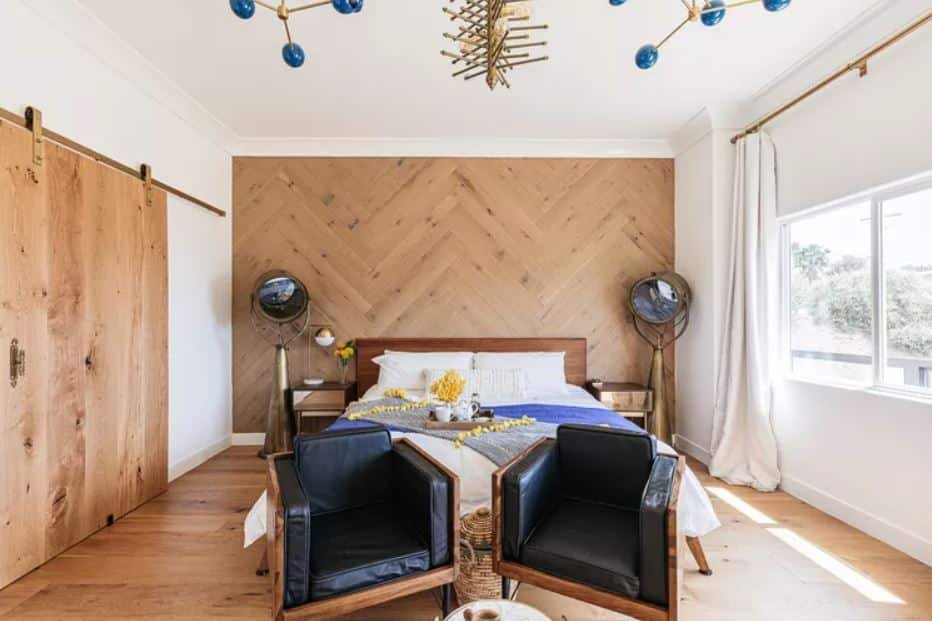
If you’re looking for something unique and innovative, you can experiment with laminate wall panels.
MDF as wall panelling material
MDF stands for Medium Density Floorboards. MDFs are wood residuals mixed with any binding agent like resin or wax. It is a recycled material and thus eco-friendly. It is similar to plywood but denser yet is in some areas better than wood.
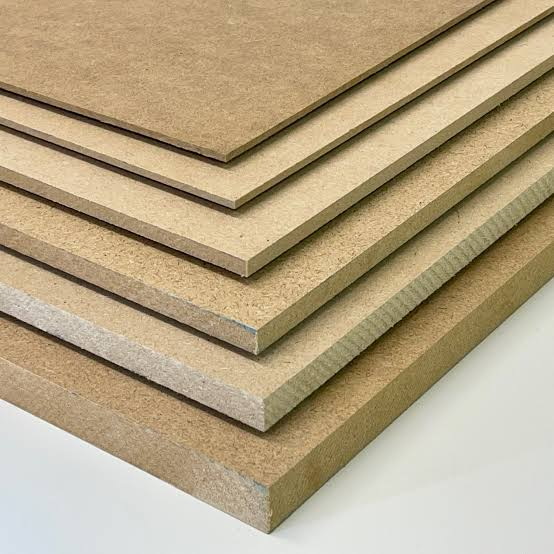
The MDF is termite-proof and budget-friendly. This material is light-weighted and easy to install. You can use paint on MDF wall panels and have an opportunity to awaken your inner artist.
Easy DY wall panelling
By painting the wall panels in bright colors, you can bring out your personality in the space. It can be used in large sheets and cover a larger area in fewer sheets.
“Be faithful to your own taste, because nothing you really like is ever out of style.” – Michael Stillwell
However, if you choose to make wall panels with MDF as materials for wall panelling, you must keep in mind that they are not moisture-resistant. The MDF is also not strong so it can collapse under heavy pressure or heavy weight.
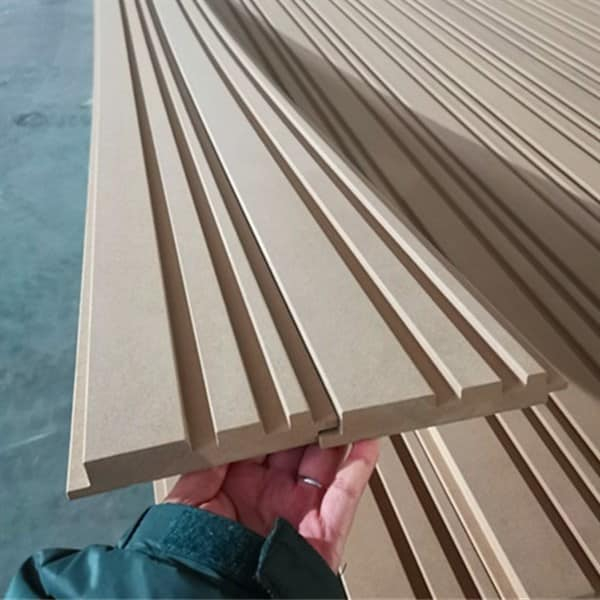
It is made up of mixed wood residues so you should not use drills and nails in these wall panels.
PVC as wall panelling
PVC stands for Polyvinyl Chloride. It is one of the most widely produced synthetic polymers of plastic in the world. Along with a plethora of other tasks, it is also one of the materials for wall panelling used nowadays.
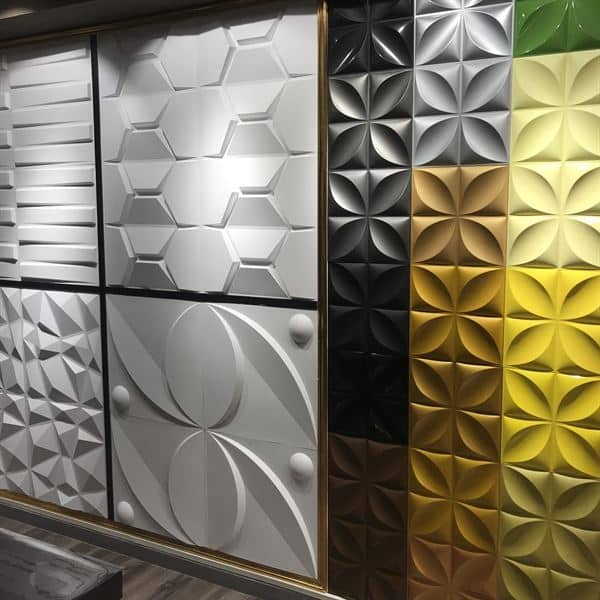
PVC wall panelling sheets are waterproof, termite-resistant, durable, cost-effective, and easy to install. This makes it a very suitable material for places that are prone to moisture. It is easy to clean and install which makes it perfect for the oily and greasy stains of the kitchen.
Also, it will help to keep the kitchen clean and hygienic as it prevents the growth of bacteria and fungus due to the lack of a porous surface. It is generally difficult to damage a PVC wall panel, but if there is any scratch or damage on it, it becomes difficult to repair.
You will need to change the whole board. The presence of constant sunlight over a PVC wall panel can discolor the wall panel over time. It is harmful to our environment as it takes thousands of years to decompose.
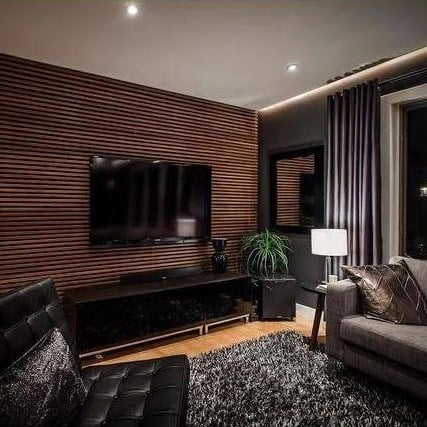
With the increasing technology in 3D modeling, one can cut PVC wall panels into any desirable shape and decorate our spaces. It comes in multiple colors and patterns too. It will add aesthetics to your home.
You can use a metal grid as the base and install the PVC wall panel on the wall.
Gypsum wall panelling
Gypsum board, also known as drywall, is one of the well-known materials for wall panelling in the construction world. The gypsum mineral is used to make these gypsum boards. Being a fire-resistant material, it adds to the aesthetics of the home along with the safety of the space.
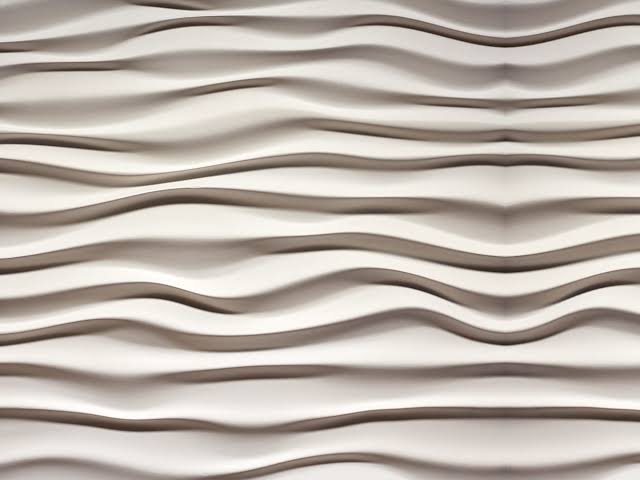
“Real comfort, visual and physical, is vital to every room.” – Michael Stillwell
Gypsum is a strong material. You can mold it into textured boards, 3D shapes, and various sizes according to your need. You can paint the wall panel with plastic paint. It will provide an opportunity for an artistic approach toward wall panels.
Commercial and industrial buildings generally use gypsum wall panels due to their fire-resistant qualities. These come in large sheets that can be modified according to the needs and are easy to install.
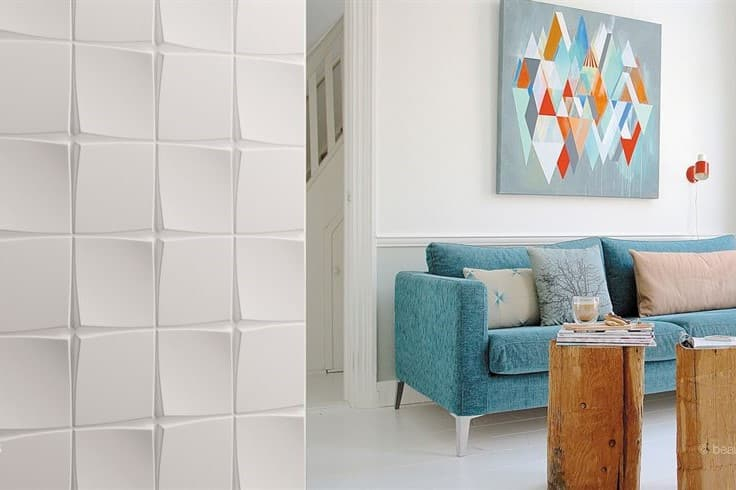
This makes gypsum a highly recommended material for wall panelling.
Fabric as wall panelling
The fabric panels use any kind of fabric as the wall panel. it can be either natural or synthetic fabric such as Polyester, Leather, Jute, Velvet, etc. By using the fabric panel for your room, you can create the feel of smoother walls and a soft environment with the correct placement of lights.
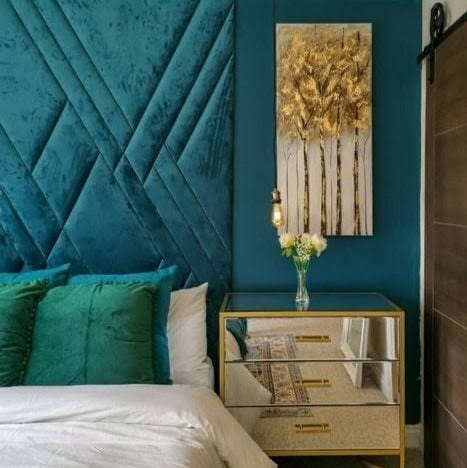
The fabrics are easy to acquire and install. The fabrics act as insulators and also absorb the sounds. Places such as auditoriums, soundproof halls, lecture halls, offices, theatres, etc. generally use these wall panels. It’s because it absorbs the echoes and sounds.

However, these fabric wall panels require maintenance and can get dirty over time with dust and dirt. The cleaning of these wall panels is a challenge and you will need to replace them.
Glass/Mirror as wall panelling
Mirrors and Glasses are used in interior decoration for ages. Nowadays, they are also used as materials for wall panelling in homes and hotels. The presence of mirrored surfaces as glass panels provides a sense of spacious room to the viewers.
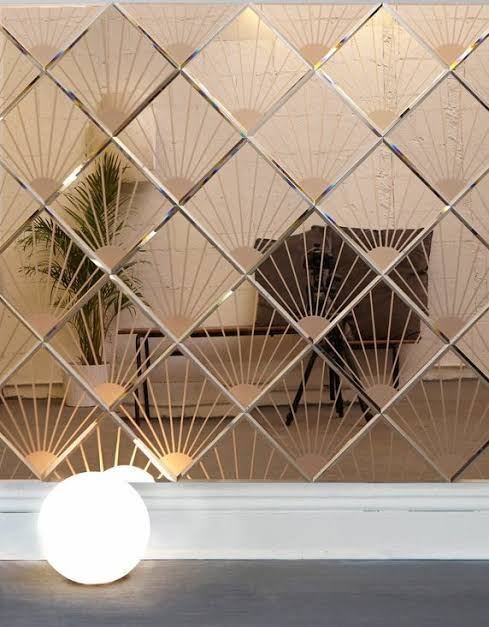
The glass wall panels with designs, patterns, and paints bring out the aesthetic appeal of a place. It makes the space feel elegant and luxurious. Foyers and narrow hallways use mirrored wall panels.
Hotel rooms use glass wall panels to give a touch of minimalistic decor to their spaces. However, the same glass wall panel with multiple patterns and mosaics \ gives a Bohemian feel to a space.
Bars and Clubs also use mirrored and glass wall panels.
Take control mix and match different materials.
If any one of these materials for wall panelling is not fulfilling your need or taste, you can mix and match materials to create a mixed version of a wall panel. You can use a wooden wall panel for the upper half and a PVC wall panel for the lower half for the places that have moisture in the lower part of the room.
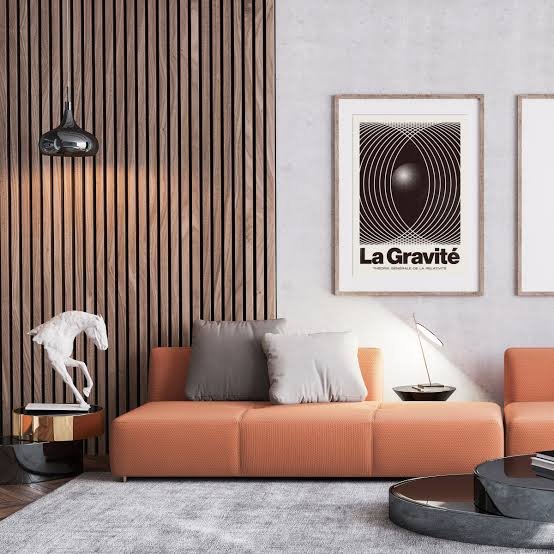
It is completely up to you. Here, we can see that half of the wall is covered in wooden panelling, and the other half in PVC panelling to add aesthetic beauty to the space.
Conclusion
So, these materials for wall panelling help to bring out the aesthetic and fulfill the requirements of your space. You can use the material that best suits your budget and style. You can also mix and match these materials to create what’s best for you.

